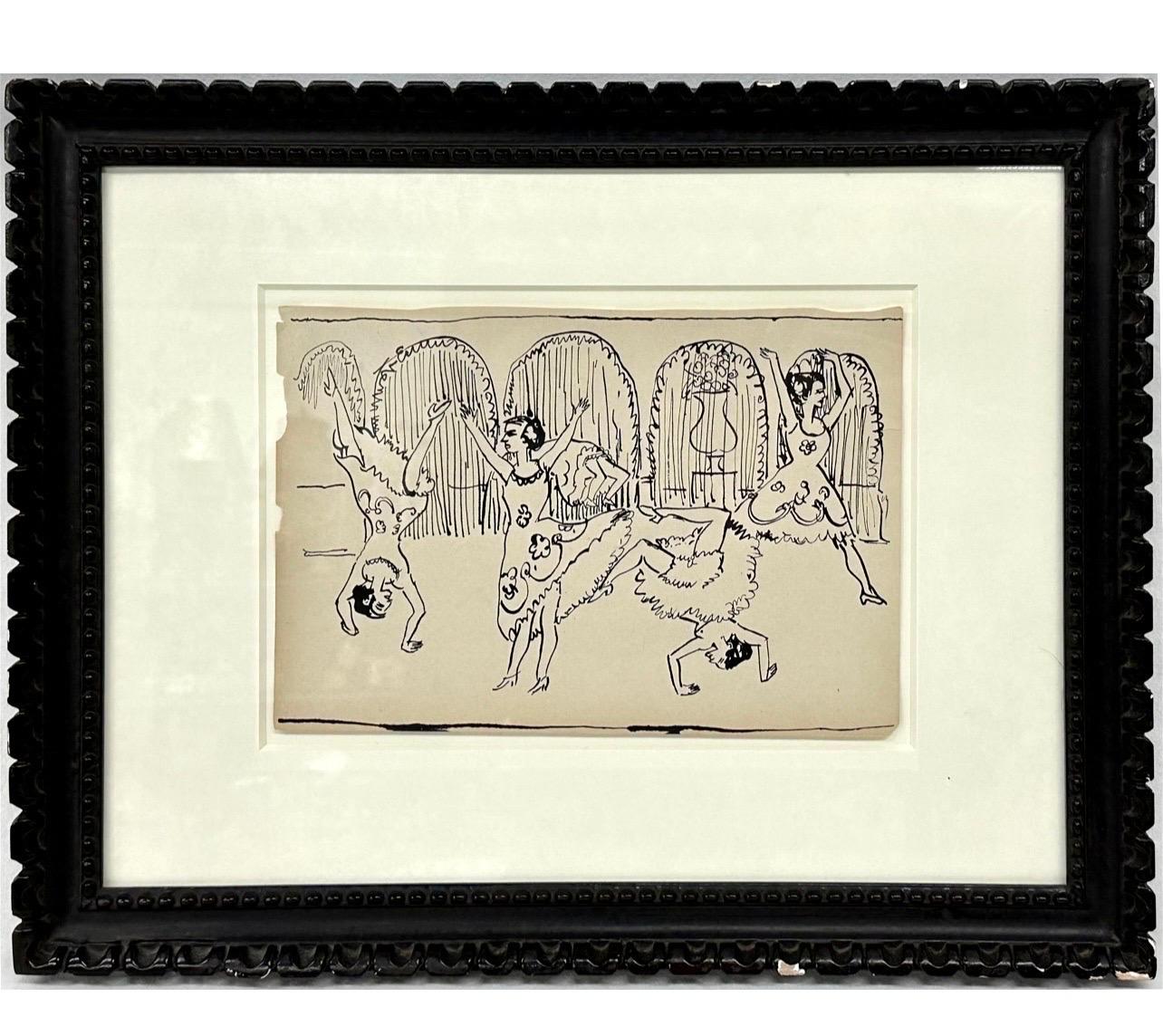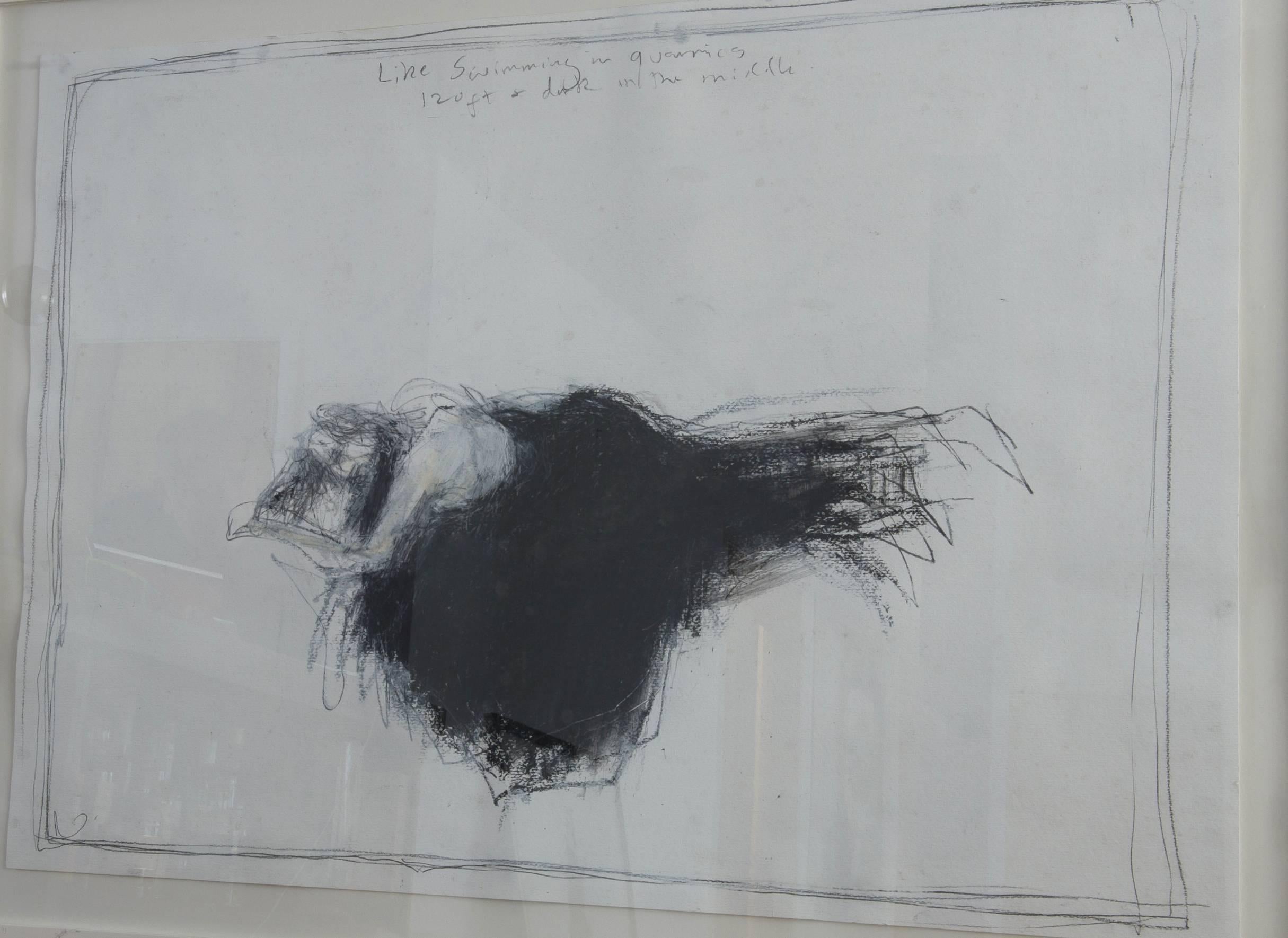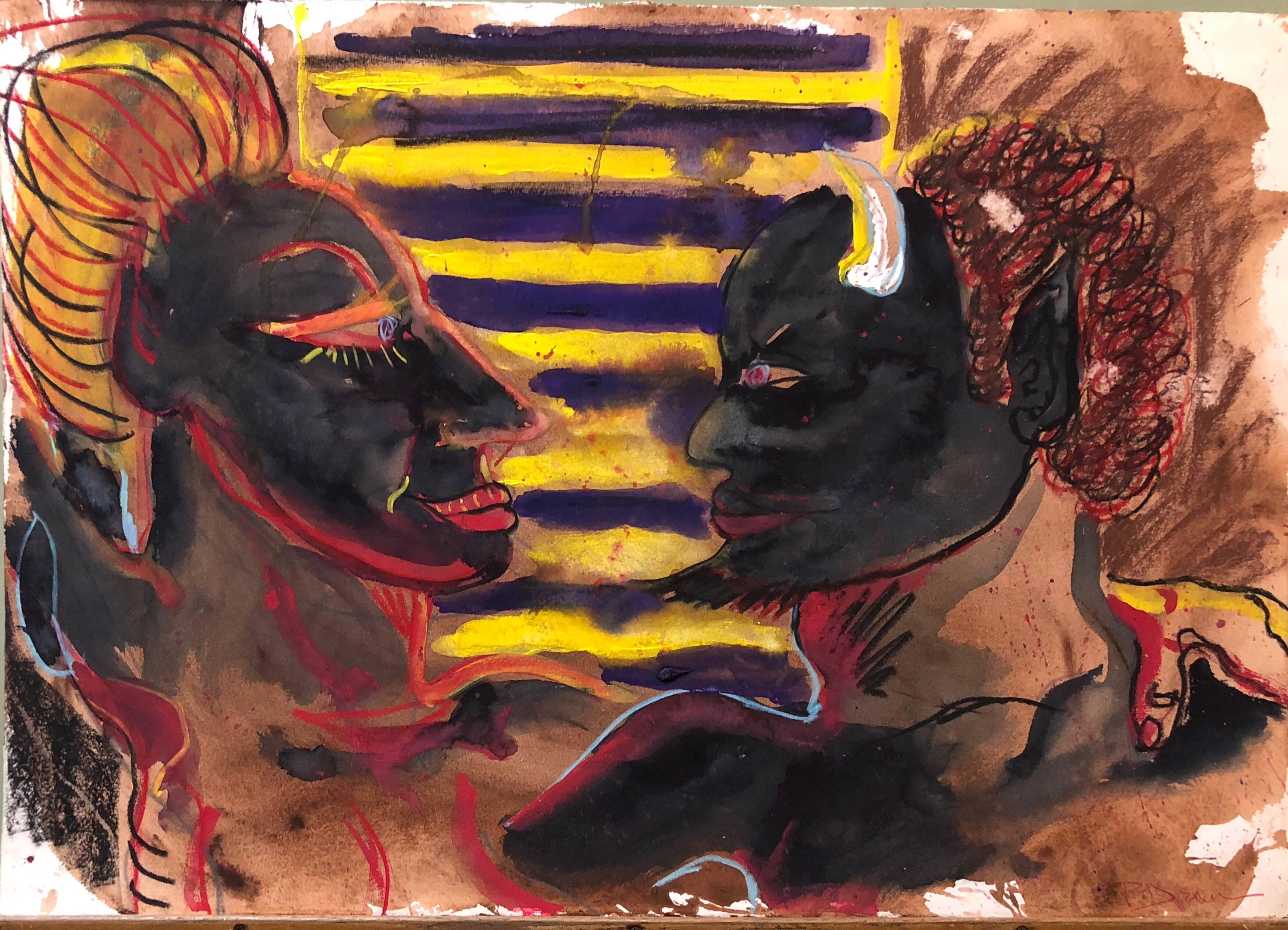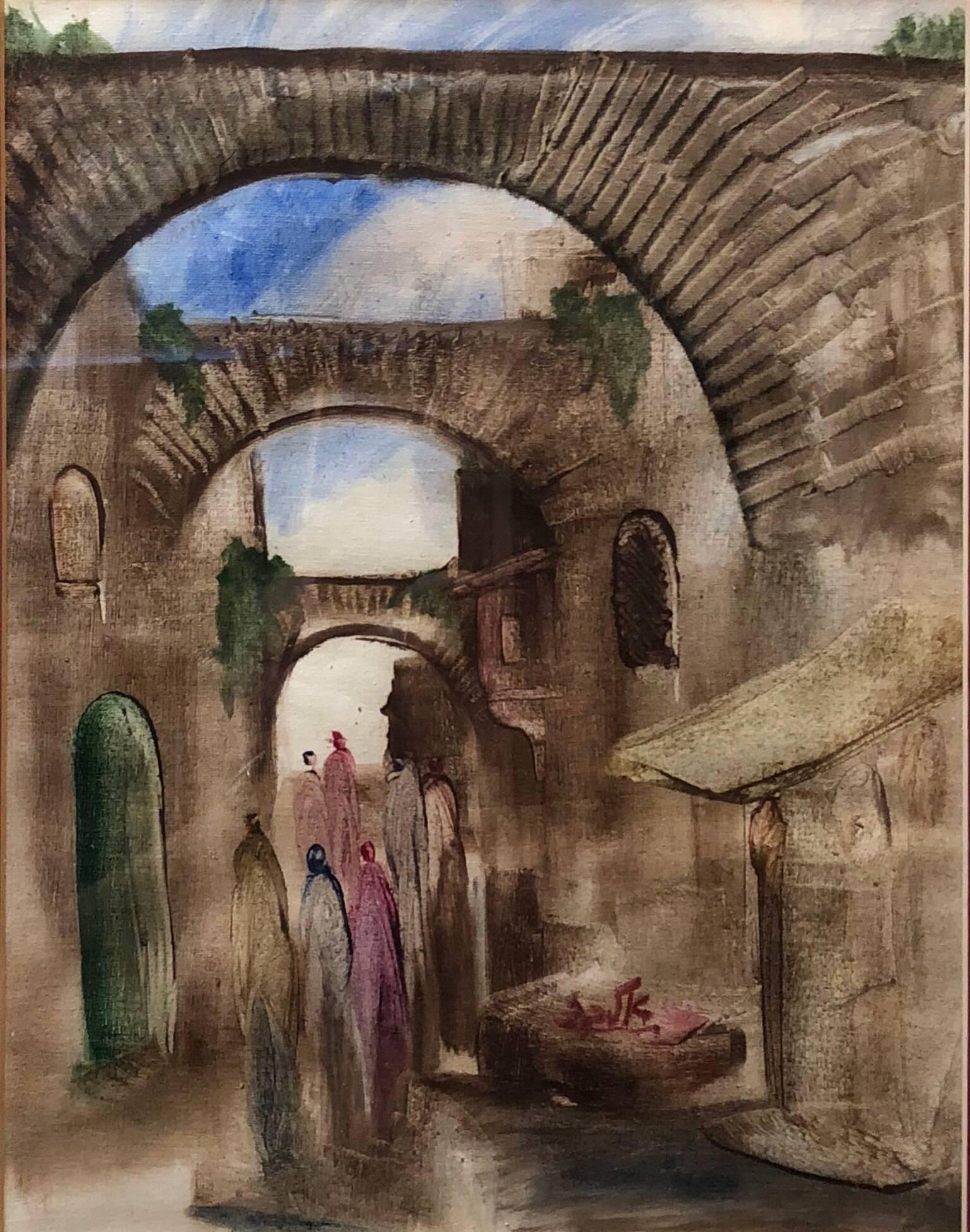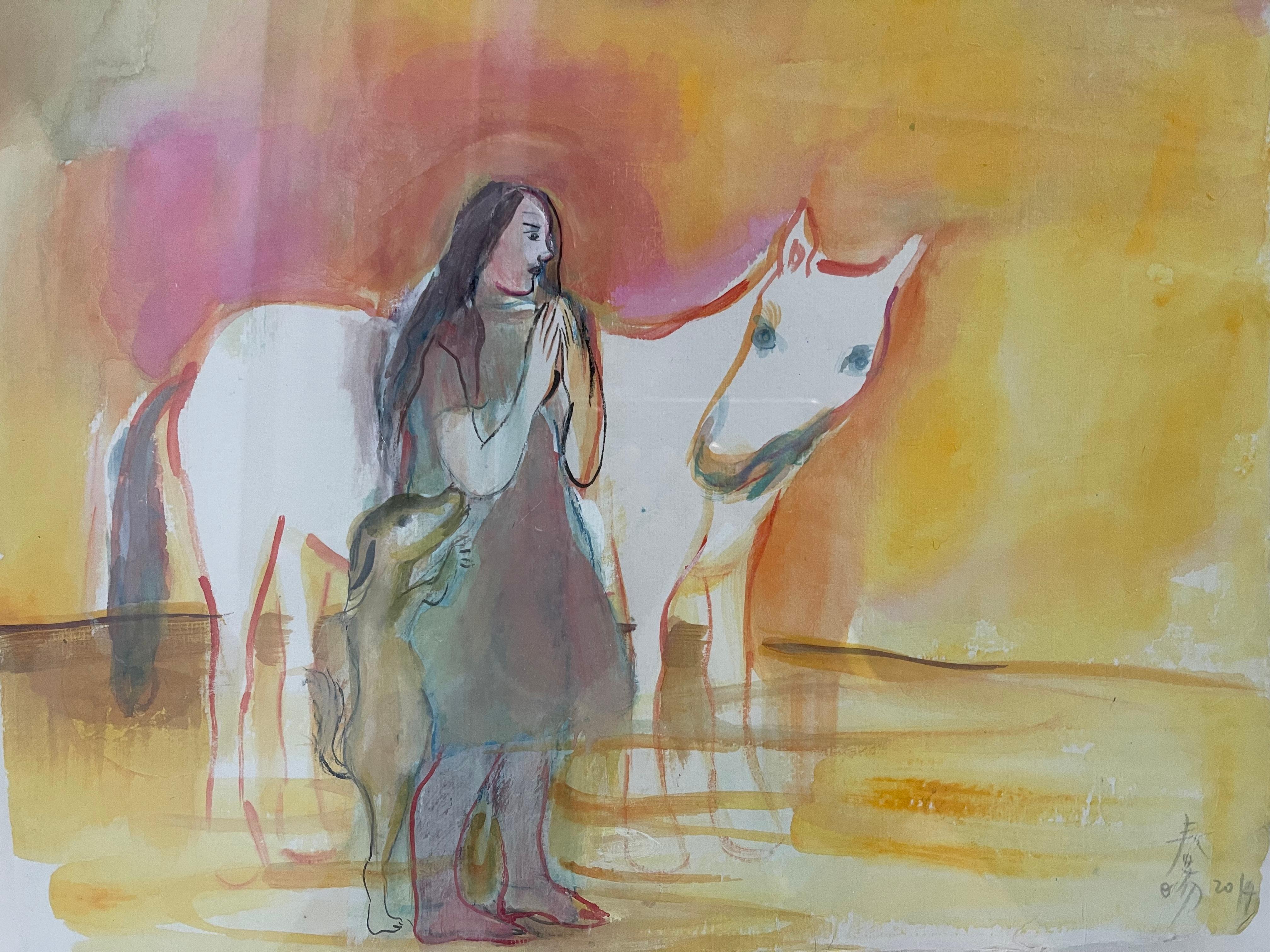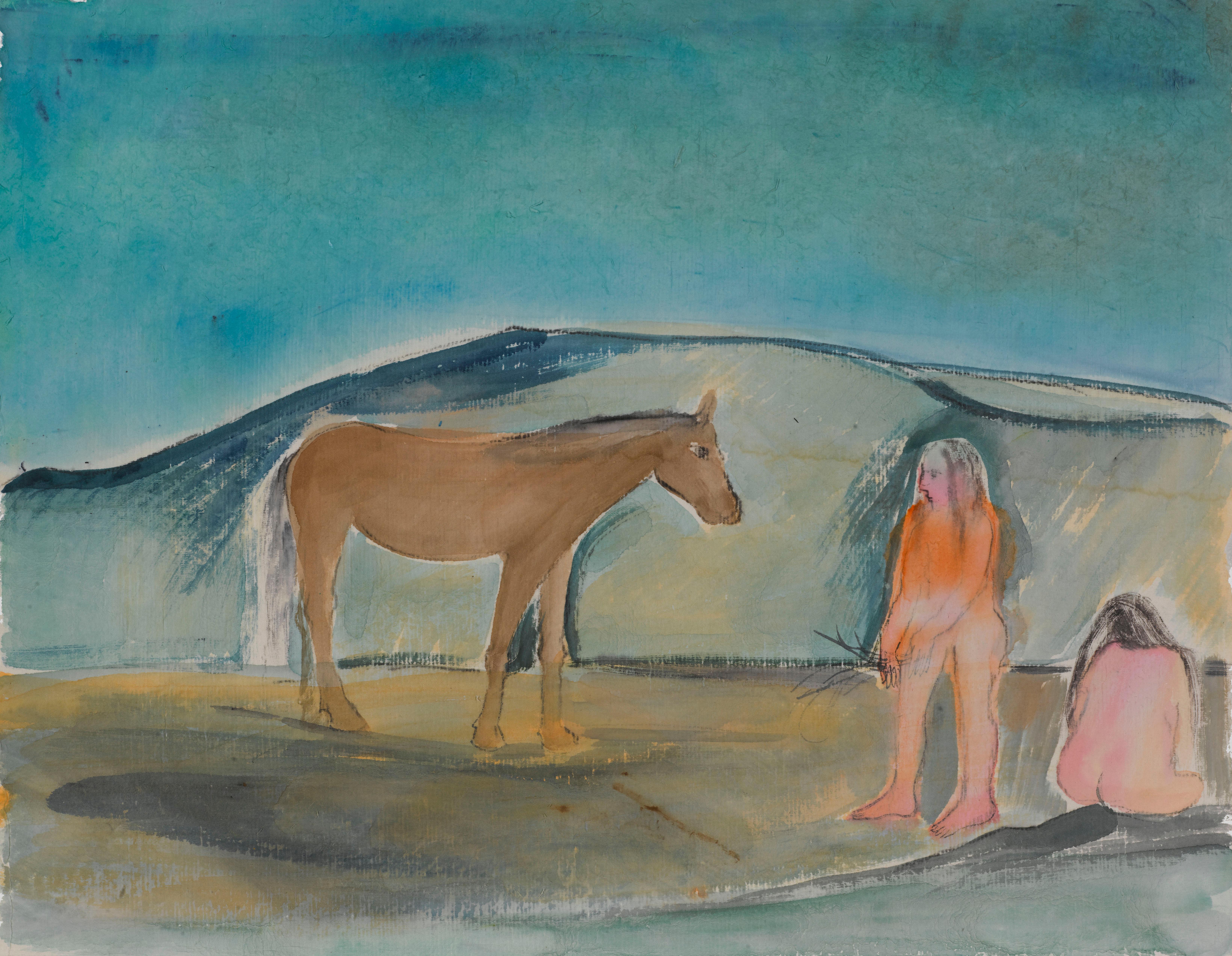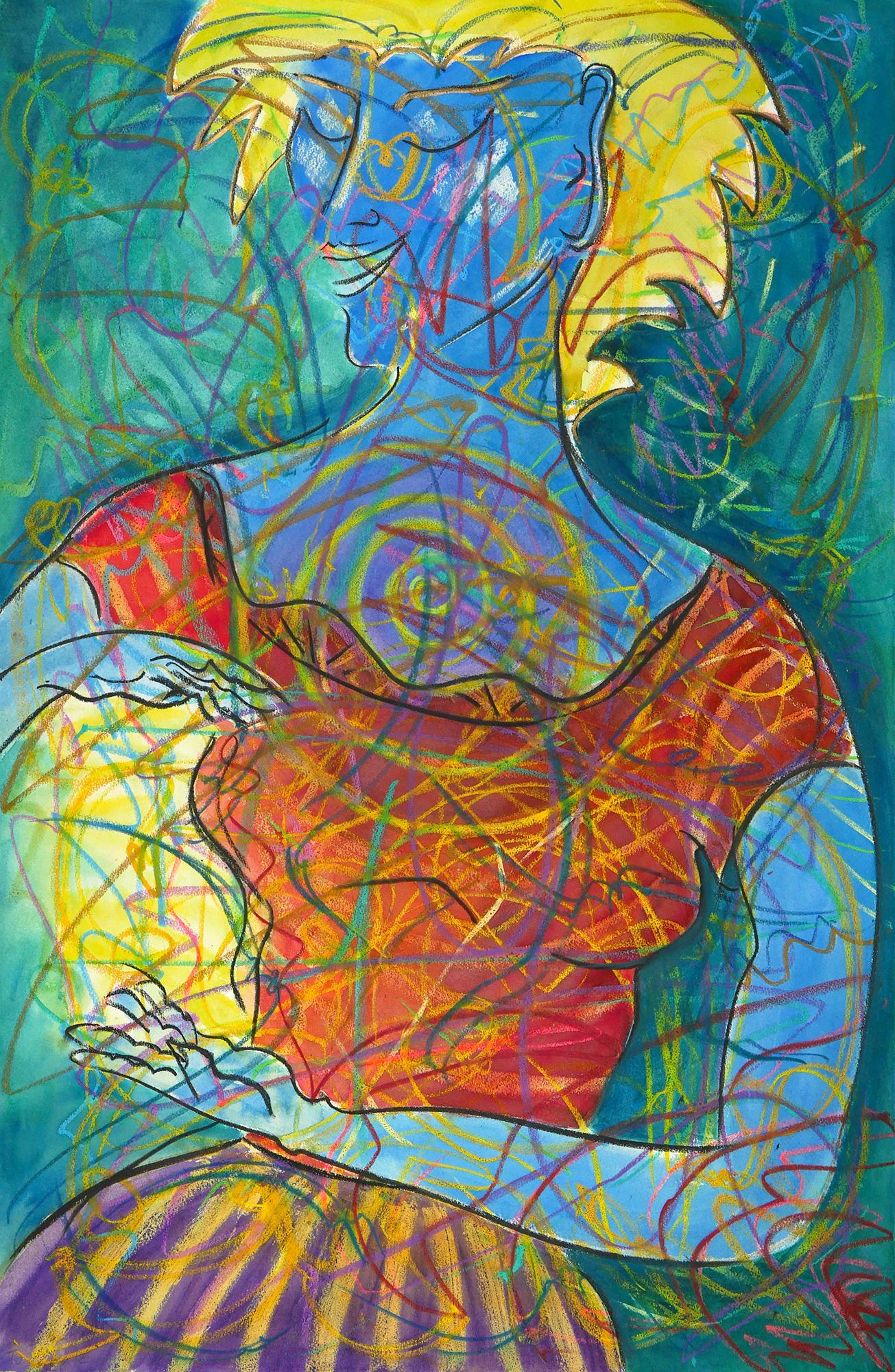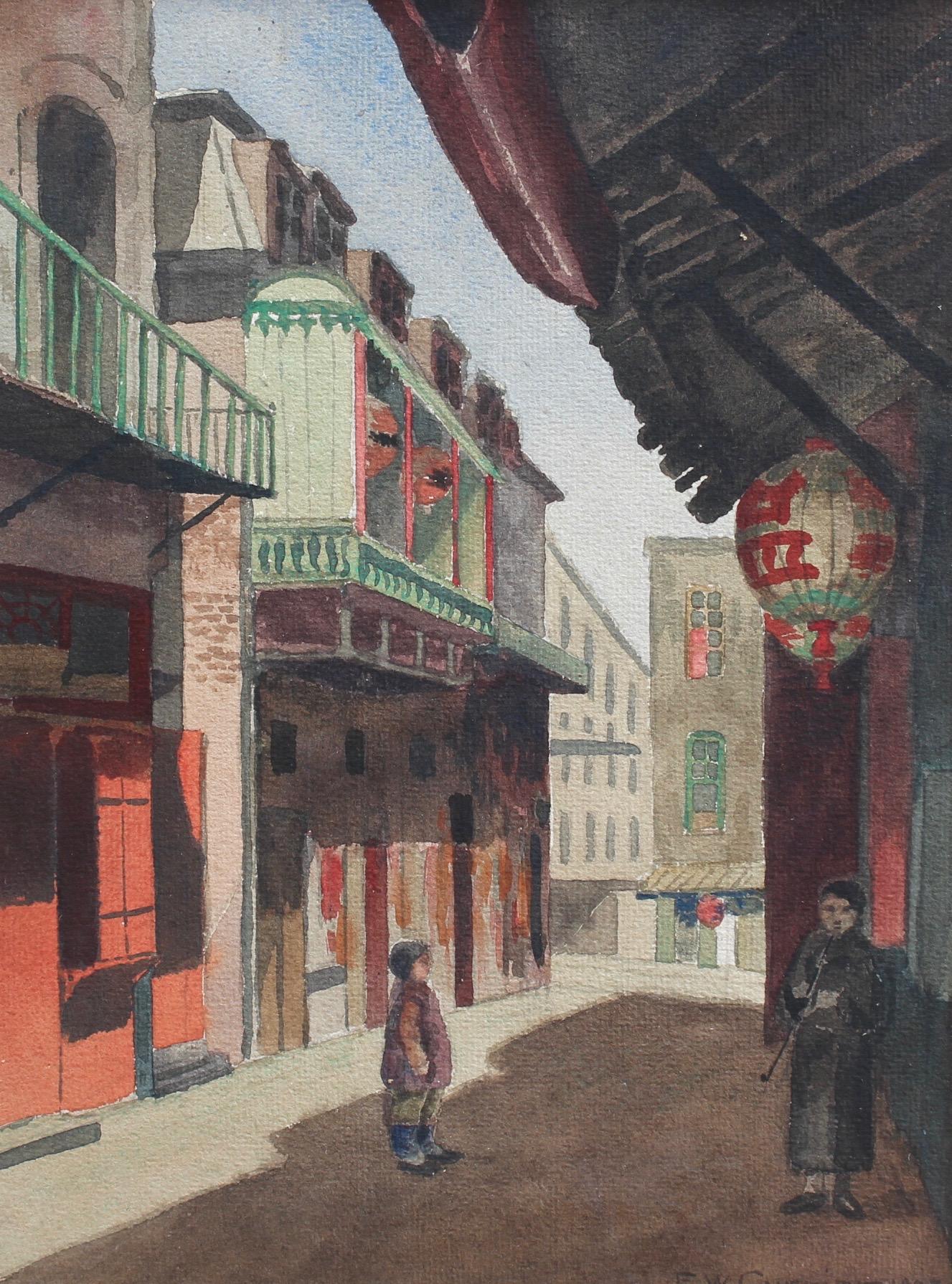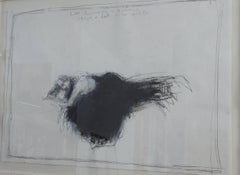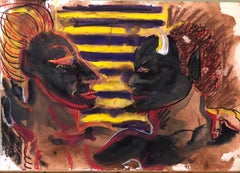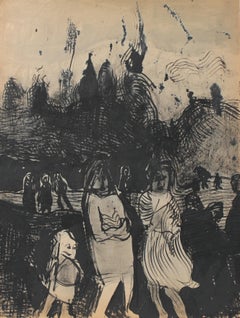
Figures in the Storm 20th Century Ink
View Similar Items
1 of 5
Jane RadesFigures in the Storm 20th Century Ink
About the Item
- Creator:Jane Rades (1942, American)
- Dimensions:Height: 23.75 in (60.33 cm)Width: 17.25 in (43.82 cm)
- Medium:
- Movement & Style:
- Period:
- Condition:Excellent vintage condition.
- Gallery Location:San Francisco, CA
- Reference Number:Seller: 981471stDibs: LU29828264082
You May Also Like
- Original German Expressionist Drawing Ernst Ludwig Kirchner Women DancingBy Ernst Ludwig KirchnerLocated in Surfside, FLErnst Ludwig Kirchner ( Germany 1880-1938 ) Expressionist Female Women Dancing Mixed Media on Paper Drawing or Painting Expressionism Dimensions: 20" L 16" H in This bore a sticker from Christies auction house and another collection sticker verso but they have been inadvertently removed. I do have the photo. Ernst Ludwig Kirchner (1880 – 1938) was a German expressionist painter and printmaker and one of the founders of the artists group Die Brücke or "The Bridge", a key group leading to the foundation of Expressionism in 20th-century art. He volunteered for army service in the First World War, but soon suffered a breakdown and was discharged. His work was branded as "Entartete Kunst" or "degenerate" by the Nazis in 1933, and in 1937 more than 600 of his works were sold or destroyed. Ernst Ludwig Kirchner was born in Aschaffenburg, Bavaria. His parents were of Prussian descent and his mother was a descendant of the Huguenots, a fact to which Kirchner often referred. As Kirchner's father searched for a job, the family moved frequently and Kirchner attended schools in Frankfurt and Perlen until his father earned the position of Professor of Paper Sciences at the College of technology in Chemnitz, where Kirchner attended secondary school. Although Kirchner's parents encouraged his artistic career they also wanted him to complete his formal education so in 1901, he began studying architecture at the Königliche Technische Hochschule (royal technical university) of Dresden. The institution provided a wide range of studies in addition to architecture, such as freehand drawing, perspective drawing and the historical study of art. While in attendance, he became close friends with Fritz Bleyl, whom Kirchner met during the first term. They discussed art together and also studied nature, having a radical outlook in common. Kirchner continued studies in Munich from 1903 to 1904, returning to Dresden in 1905 to complete his degree. In 1905, Kirchner, along with Bleyl and two other architecture students, Karl Schmidt-Rottluff and Erich Heckel, founded the artists group Die Brücke ("The Bridge") later to include Emil Nolde, Max Pechstein and Otto Mueller. From then on, he committed himself to art. The group aimed to eschew the prevalent traditional academic style and find a new mode of artistic expression, which would form a bridge (hence the name) between the past and the present. They responded both to past artists such as Albrecht Dürer, Matthias Grünewald and Lucas Cranach the Elder, as well as contemporary international avant-garde movements. As part of the affirmation of their national heritage, they revived older media, particularly woodcut or woodblock prints. Kirchner's studio became a venue which overthrew social conventions to allow casual love-making and frequent nudity. Group life-drawing sessions took place using nude models from the social circle, rather than professionals, and choosing quarter-hour poses to encourage spontaneity. In 1911, he moved to Berlin, where he founded a private art school, MIUM-Institut, in collaboration with Max Pechstein with the aim of promulgating "Moderner Unterricht im Malen" (modern teaching of painting). This was not a success and closed the following year, when he also began a relationship with Erna Schilling that lasted the rest of his life. In 1917, at the suggestion of Eberhard Grisebach [de], Helene Spengler invited Kirchner to Davos where he viewed an exhibition of Ferdinand Hodler paintings. "When I was leaving, I thought of Vincent Van Gogh's fate and thought that it would be his as well, sooner or later. Only later will people understand and see how much he has contributed to painting". In 1921 Kirchner visited Zurich at the beginning of May and met the dancer, Nina Hard, whom he invited back to Frauenkirch (despite Erna's objections). Nina Hard would become an important model for Kirchner and would be featured in many of his works. Kirchner began creating designs for carpets which were then woven by Lise Gujer. In 1925, Kirchner became close friends with fellow artist, Albert Müller...Category
Early 20th Century Expressionist Figurative Drawings and Watercolors
MaterialsInk, Paper
- Like Swimming In A Quarry. Contemporary Figurative DrawingBy Paul WadsworthLocated in Brecon, PowysLike Swimming In A Quarry - 120 feet and dark in the middle. One of Wadsworth's celebrated & innovative Black Cloth series. His sitters pose with a large black cloth & talk about wha...Category
21st Century and Contemporary Expressionist Figurative Paintings
MaterialsInk, Watercolor, Graphite
- One More Time (Black Devil) Outsider Art Painting, DrawingBy Peter DeanLocated in Surfside, FLDean was born in 1934 of Jewish parents in a Berlin, Germany, that was falling prey to the Nazis. The family immigrated to New York City in 1938, and Dean was raised in the refugee community in Inwood. Dean's first show (ironically, in retrospect) was given him by the USIA in Brazil. In 1959, he returned to New York to work six months on, six months off in soil engineering and made art in the interims. He tried, and failed, to get into a Tenth Street Gallery. Studying painting at night with Andre Girard at City College pushed him over the edge, and in 1969 he committed himself to painting full time. Artists who impressed him in the '60s were Robert Beauchamp, Lester Johnson, Jan Muller...Category
1980s Expressionist Figurative Drawings and Watercolors
MaterialsPaper, Oil Pastel, Acrylic
- Three Rabbis at The Torah, Expressionist Judaica PaintingBy Andre ElbazLocated in Surfside, FLIn this painting the artist uses gestural brushstrokes, which causes distortion and exaggeration for emotional effect. Andre Elbaz uses as his subject three male figures with tefilin are depicted during prayer. André Elbaz (born April 26, 1934, El Jadida, Morocco) is a famous Moroccan painter and filmmaker. Elbaz studied art and theatre in Rabat and Paris from 1950 to 1961. He started painting only at the age of 21, until which age he had been interested mainly in theatre. A few years later, he managed to combine his two passions into a new approach in art-therapy, inventing together with his wife, a psychiatrist, the Pictodrame, which brought him world recognition. His first exhibition, which was very successful, took place in Casablanca in 1961 and earned him an appointment as Professor at the Beaux-Arts school in Casablanca. Years later, in 1976, he exhibited his paintings at the Tel-Aviv Museum. In parallel to his career as a painter, Elbaz is also known as a filmmaker. He produced several short films in France, Canada and the United States. One of them, La nuit n'est jamais complète (The night is never complete), won a prize at the "5th Biennale de Paris in 1967". Among the themes chosen for the many films he produced, there was a short one about the Warsaw Ghetto uprising, as well as a series of drawings entitled Seuls (Alone), with texts written by both Elie Wiesel...Category
20th Century Expressionist Figurative Paintings
MaterialsPaper, Gouache
- Jerusalem Old City Landscape, Expressionist Judaica Israeli PaintingBy Andre ElbazLocated in Surfside, FLIn this painting the artist uses gestural brushstrokes, which causes distortion and exaggeration for emotional effect. Andre Elbaz uses as his subject figures walking in old city Jerusalem. André Elbaz (born April 26, 1934, El Jadida, Morocco) is a famous Moroccan painter and filmmaker. Elbaz studied art and theatre in Rabat and Paris from 1950 to 1961. He started painting only at the age of 21, until which age he had been interested mainly in theatre. A few years later, he managed to combine his two passions into a new approach in art-therapy, inventing together with his wife, a psychiatrist, the Pictodrame, which brought him world recognition. His first exhibition, which was very successful, took place in Casablanca in 1961 and earned him an appointment as Professor at the Beaux-Arts school in Casablanca. Years later, in 1976, he exhibited his paintings at the Tel-Aviv Museum. In parallel to his career as a painter, Elbaz is also known as a filmmaker. He produced several short films in France, Canada and the United States. One of them, La nuit n'est jamais complète (The night is never complete), won a prize at the "5th Biennale de Paris in 1967". Among the themes chosen for the many films he produced, there was a short one about the Warsaw Ghetto uprising, as well as a series of drawings entitled Seuls (Alone), with texts written by both Elie Wiesel...Category
20th Century Expressionist Figurative Paintings
MaterialsPaper, Gouache
- Expressionist Figurative water color painting- Series The Horse Whisper No.2-25Located in Beijing, CNExpressionist Figurative water color painting by Zhang Chunyang Series The Horse Whisper No.2-25 Dimension: 29 x 36 cm Material: Gouache, Watercolor on Paper Date: 2013 Artist B...Category
2010s Expressionist Figurative Drawings and Watercolors
MaterialsWatercolor, Gouache, Handmade Paper
